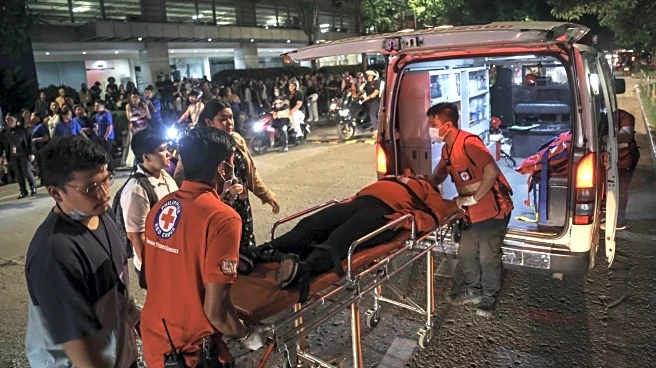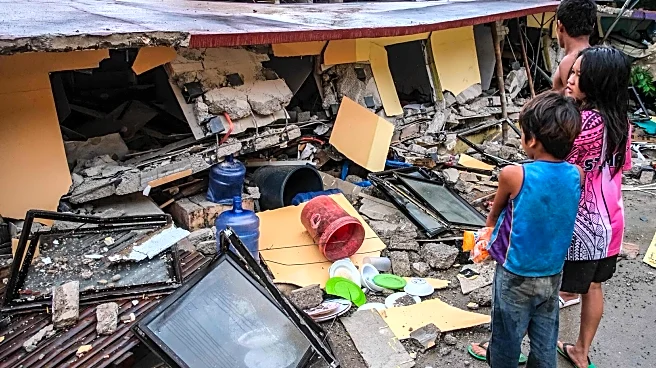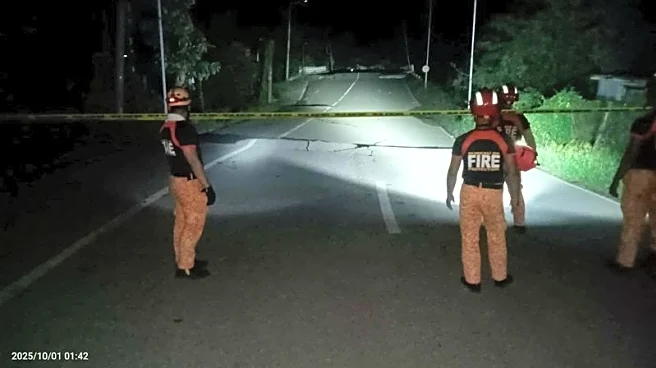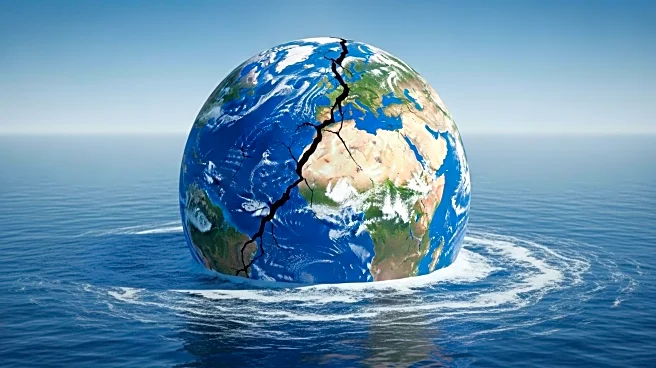What's Happening?
A 6.9-magnitude earthquake struck the central Philippines, specifically affecting the city of Bogo in Cebu province. The earthquake resulted in at least 69 fatalities and 147 injuries, as reported by the Office of Civil Defense and the Philippines’ National Disaster Risk Reduction and Management Center. The quake caused extensive damage to infrastructure, leaving towns without power and communication. The epicenter was near Bogo, which experienced the most severe impact. Roads and bridges are currently being assessed for damage, and access for additional responders is limited. The earthquake also triggered landslides and rendered several bridges and roads impassable. Additionally, the quake disrupted events such as the Miss Asia Pacific International pageant, causing structural damage and injuries.
Why It's Important?
The earthquake's impact on the Philippines highlights the vulnerability of regions situated along the Pacific Ring of Fire, known for its seismic activity. The destruction of infrastructure and loss of life underscore the need for robust disaster preparedness and response strategies. The economic implications are significant, as the damage to businesses and infrastructure could hinder local economies and require substantial resources for recovery. The declaration of a 'state of calamity' in affected areas aims to expedite relief efforts, but the ongoing aftershocks and adverse weather conditions complicate these efforts. The situation calls for international attention and potential aid to support recovery and rebuilding efforts.
What's Next?
In the aftermath of the earthquake, relief and recovery operations are underway, with local and national authorities coordinating efforts to provide food, medicine, and equipment to affected areas. Cebu Governor Pamela Baricuatro has established a joint operations center to streamline these efforts. President Ferdinand Marcos Jr. is expected to visit the affected areas to assess the situation and coordinate further response measures. The declaration of a 'state of calamity' will facilitate the mobilization of resources and aid. However, the region may continue to experience aftershocks, which could pose additional risks to both residents and responders.
Beyond the Headlines
The earthquake in the Philippines serves as a reminder of the broader challenges faced by countries located in seismically active zones. It raises questions about the adequacy of current building codes and disaster preparedness measures. The event also highlights the importance of international cooperation in disaster response and the potential role of technology in improving early warning systems. Long-term, the earthquake could prompt a reevaluation of infrastructure resilience and emergency management policies in the region.












